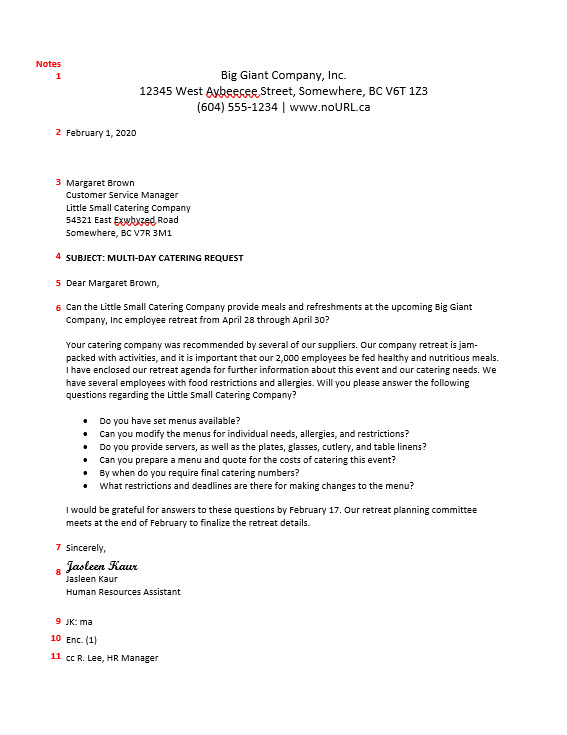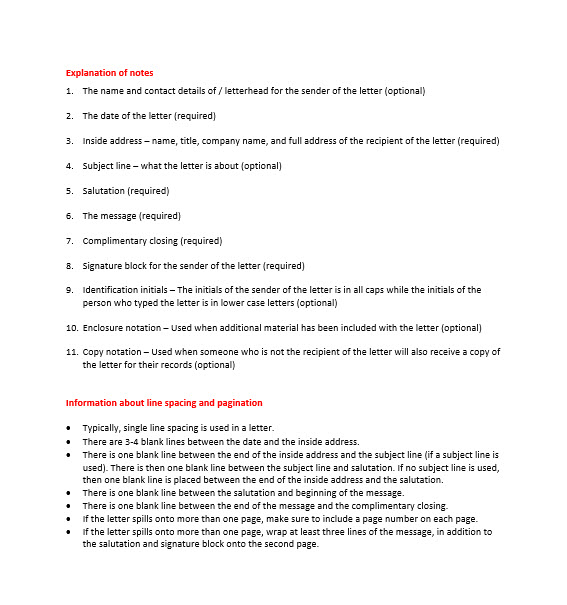5.2 Letters
Letters are brief messages sent to recipients that are often outside the organization (Bovee & Thill, 2010). They are often printed on letterhead paper and represent the business or organization in one or two pages. Shorter messages may include e-mails or memos, either hard copy or electronic, while reports tend to be three or more pages in length.
While e-mail and text messages may be used more frequently today, the business letter remains a common form of written communication. It can serve to introduce you to a potential employer, announce a product or service, or even serve to communicate feelings and emotions. We’ll examine the basic outline of a letter and then focus on specific products or writing assignments.
All business messages have expectations in terms of language and format. The audience or reader also may have their own idea of what constitutes a specific type of letter, and your organization may have its own format and requirements. There are many types of letters, and many adaptations in terms of form and content. In this chapter, we discuss the fifteen elements of a traditional block-style letter.
Letters may serve to introduce your skills and qualifications to prospective employers, deliver important or specific information, or serve as documentation of an event or decision. Regardless of the type of letter you need to write, it can contain up to fifteen elements in five areas. While you may not use all the elements in every case or context, they are listed in Table 4.2.1.
Table 4.2.1 Elements of a business letter
| Return address | This is your address where someone could send a reply. If your letter includes a letterhead with this information, either in the header (across the top of the page) or the footer (along the bottom of the page), you do not need to include it before the date. |
| Date | The date should be placed at the top left. |
| Subject | Like a subject line in an e-mail, this is where you indicate what the letter is in reference to, the subject or purpose of the document. |
| Salutation | Usually something like “Dear.” Generally speaking, so as to not assume the pronouns used by recipients of the letter, the first and last name of the recipient are used. e.g., Dear Melissa Ashman, |
| Message | Typically more than one paragraph. |
| Complimentary closing | A greeting to close a letter. e.g., Sincerely, |
| Signature block | Your signature, name (typed), and title (optional) |
| Identification initials | If the letter was prepared or typed by someone other than the signatory (you), then inclusion of initials is common, as in MJD or abc. |
| Enclosures (attachments) | Just like an e-mail with an attachment, the letter sometimes has additional documents that are delivered with it. This line indicates what the reader can look for in terms of documents included with the letter, such as brochures, reports, or related business documents. Only include this line if you are in fact including additional documentation. |
| Copy notification (“cc”) | The abbreviation “CC” once stood for carbon copies but now refers to courtesy copies. Just like a “CC” option in an e-mail, it indicates the relevant parties that will also receive a copy of the document. |
A sample letter, illustrating the parts of the letter, is shown in Figure 4.2.1. An explanation of the notes is shown in Figure 4.2.2.

Figure 4.2.1. A sample letter.

Figure 4.2.2. An explanation of the notes in the sample letter.
Reference
Bovee, C., & Thill, J. (2010). Business communication essentials: A skills-based approach to vital business English (4th ed.). Upper Saddle River, NJ: Prentice Hall.
Attribution
This chapter contains material taken from Chapter 9.2 “Memorandums and letters” in Business Communication for Success and is used under a CC-BY-NC-SA 4.0 International license.

